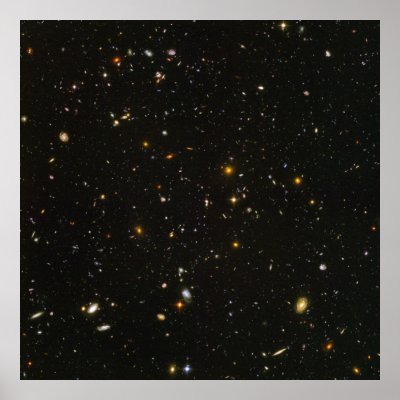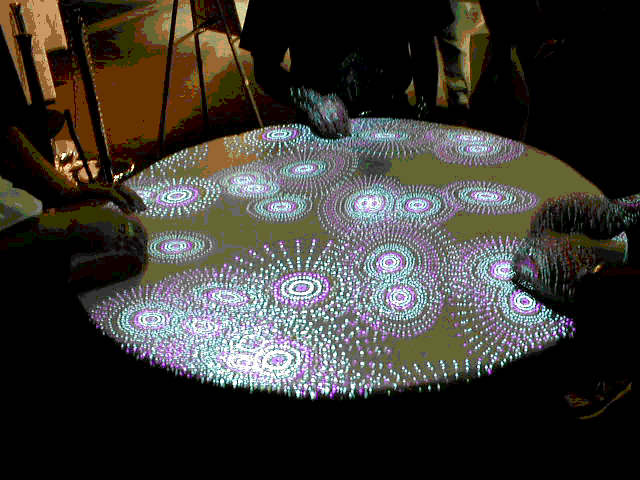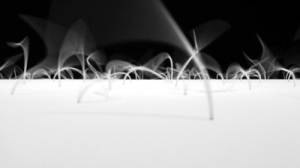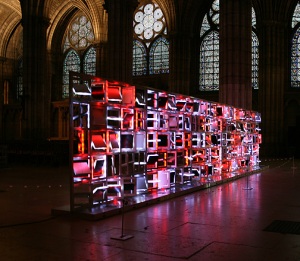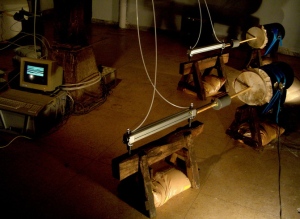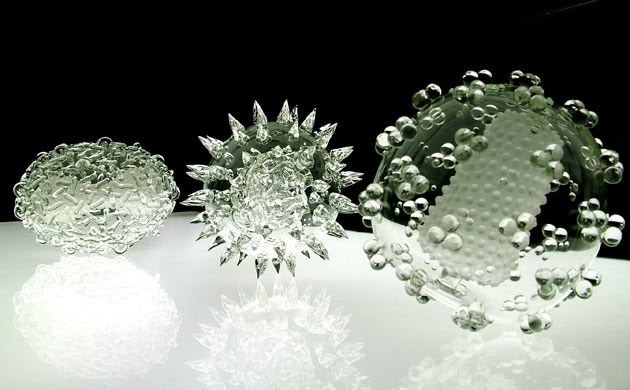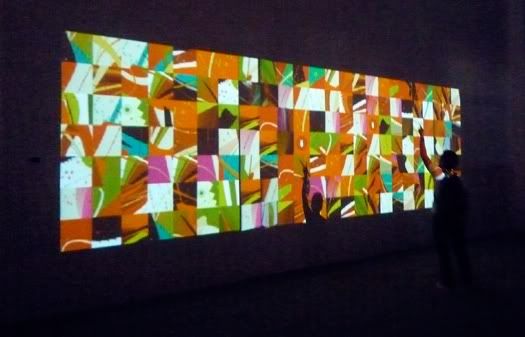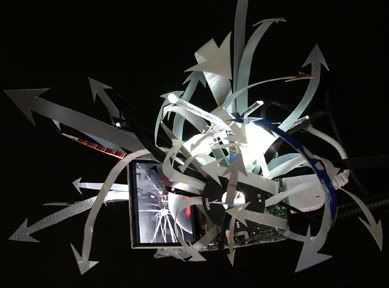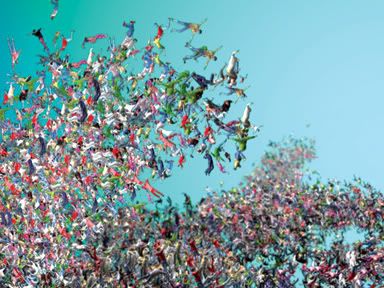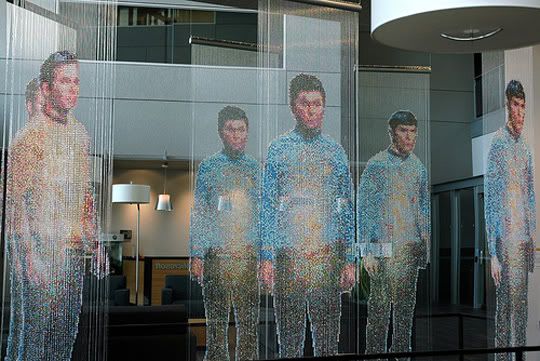1. Ferrofluids. Basically, ferrofluids appear as a black fluid. They are prepared by dissolving nanoscale ferromagnetic particles in a solvent such as water or oil and remain strongly magnetic even in a fluid condition. Therefore, they are more flexibly transformable as compared to iron sand. It is well known that ferrofluids form spikes along magnetic field lines when the magnetic surface force exceeds the stabilizing effects of the fluid weight and surface tension. (See Image 1)
http://www.robaid.com/tech/where-art-an ... ptures.htm
2. As a digital artist and architectural designer Jonathan Duckworth operates between art and technology, in the field of design and new media arts practice. He has a particular interest in exploring kinaesthetic experience and the aesthetics of interactivity as it relates to understanding multi-modal qualities of digital and physical space.
Jonathan's work is informed by a broad range of current research in virtual reality graphics technology, interaction design, physical computing and new electronic materials that bring to the fore unprecedented scope to modify our spatial experiences.
http://www.synapse.net.au/people/jonathan_duckworth
3. As technology continues to blend flawlessly with our daily routine, the junction amid art and technology has become increasingly universal. Realizing the fact Japanese artist Mutoh Tsutomu has taken a step ahead in taking his artistic approach to the other dominion by installing Optical Tone that utilizes LED light spectrums in synergy with sensors that interrelate with guests to generate original light opus. The Optical Tone Algorithm is developed to visually alter the viewer’s sensitivity of the Optical Tone room. (See Image 2)
http://elitechoice.org/tag/exhibitions/
4. The Soundscape. Each unit contains a miniature digital audio chip, coupled to a digital timer, set individually so that each of the thirty units has a unique time signature. The audio chips contain short samples of natural history sounds, bird song, insect song and frog voices. The combination of multiple sound sources, in conjunction with individual time signatures and the fluctuations of the solar power supply give the soundscape an un-cannily ‘natural’ presence. Technically, this a type of ‘emergent behaviour’ in which although we might hear individual elements repeat, the overall soundscape is in fact an infinite mix (somewhat like the always familiar, but never repeating sounds of a creek). In reality the soundscape blends so seamlessly with the natural environment it if quite difficult to distinguish the ‘artificial’ from the ‘natural’ background. Haiku.“Haiku” is a multi-part solar-powered environmental sound sculpture that distributes a series of traditional Japanese poems via miniature digital audio storage units operated by solar timers.
http://www.sonicobjects.com/index.php/t ... listening/
5. In the spirt of GRL’s and Eyebeam’s open source beliefs, we are posting the code and executable for the Laser Tag application online for you to download, dissect, reuse and hopefully improve. The code is C++ and compiled in a super old school Codewarrior IDE for windows but it is oepnGL based and written using openFrameworks which is a cross platform library for writing creative code. So it should be very straight forward to run in Visual Studio, DevC++ or even xcode on a mac.
In its simplest form the Laser Tag system is a camera and laptop setup, tracking a green laser point across the face of a building and generating graphics based on the laser’s position which then get projected back onto the building with a high power projector.
There are a bunch of things you need to do to get Laser Tag up and running yourself, so here follows the required equipment and setup instructions. This will assume that you using windows but it will also apply for other OSs too.
EQUIPMENT
We used:
1 PC Laptop - ASUS A8JS - Core 2 Duo 1.83 Ghz 1GB Ram Nvideo Geforce Go 7300 256MB - VGA and DVI out.
1 Pansonic PTD5600U 5000 ANSI Lumens 1024×768 DLP Projector.
1 Watec 221S Security/Astrononmy Camera with manual iris zoom lens.
1 Bogen magic arm and super clamp.
1 Pinnacle PCTV USB capture card.
1 60mW Green Laser (super illegal in a lot of places and very dangerous)
and loads and loads of AAA batteries.”
http://hackedgadgets.com/2007/02/25/gra ... laser-tag/
VIDEO:
http://www.youtube.com/watch?v=EFWcAkxz ... r_embedded
(See Image 3)



